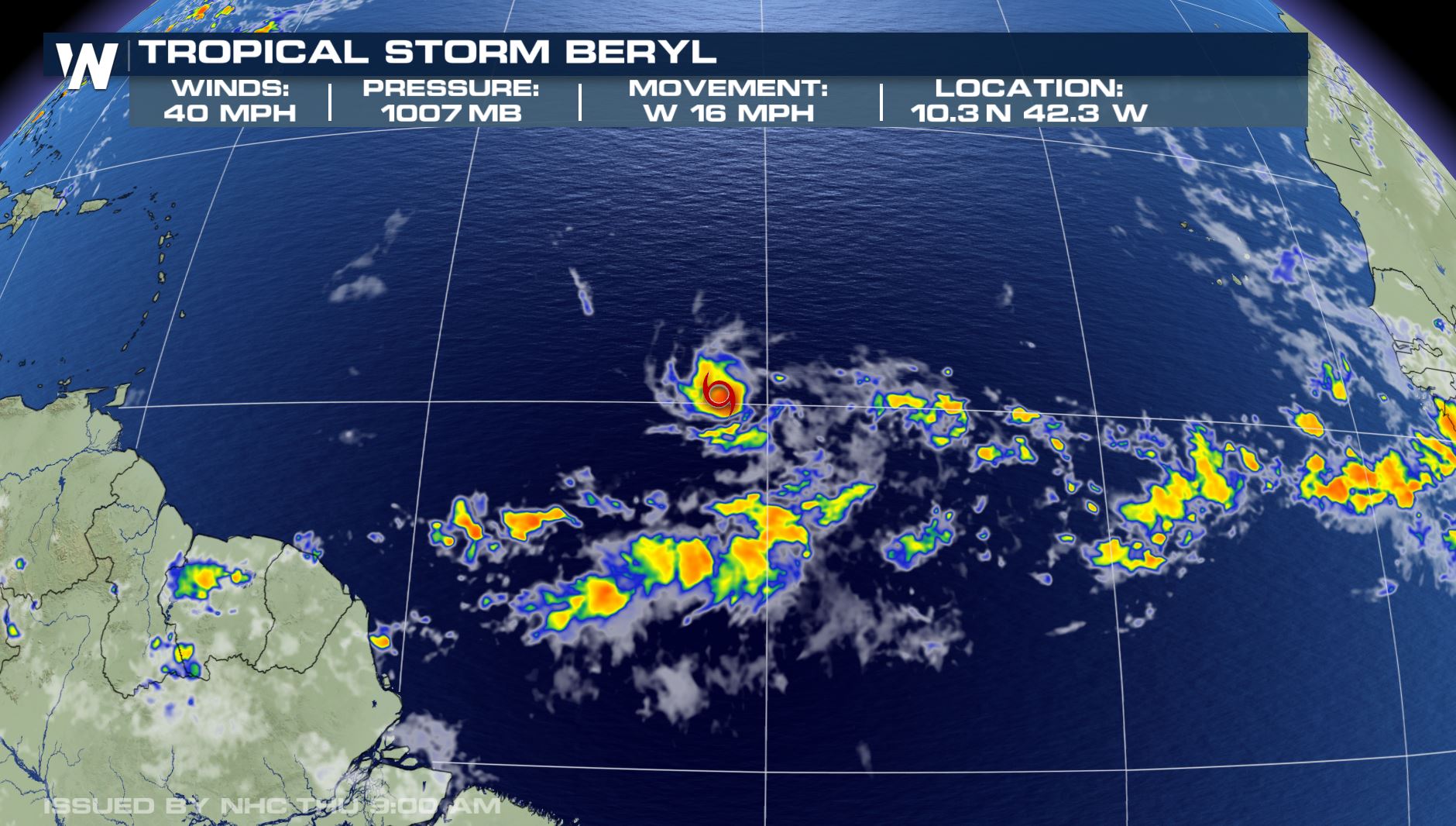Storm Beryl’s Current and Predicted Path: Storm Beryl Path

Storm beryl path – Storm Beryl is currently located over the Atlantic Ocean, approximately 1,000 miles east of the Lesser Antilles. The storm is moving west-northwest at 15 mph and is expected to continue on this path for the next few days. Beryl is forecast to reach the Lesser Antilles by late Tuesday or early Wednesday, and then move across the Caribbean Sea and into the Gulf of Mexico by the end of the week.
Storm Beryl has been churning its way through the Atlantic, leaving a trail of destruction in its wake. As it continues its path, many are wondering if it will make landfall in Florida. To stay informed about the latest updates on Beryl’s path, including its potential impact on Florida, visit this website.
As the storm progresses, it’s crucial to monitor its movement and heed any warnings issued by local authorities.
Projected Path
The projected path of Storm Beryl is shown on the map below. The storm is expected to make landfall in Florida by early next week, although the exact location of landfall is still uncertain.

Timeline
- Tuesday, August 7: Storm Beryl is expected to reach the Lesser Antilles.
- Wednesday, August 8: The storm is expected to move across the Caribbean Sea.
- Thursday, August 9: Beryl is expected to enter the Gulf of Mexico.
- Friday, August 10: The storm is expected to make landfall in Florida.
Potential Impacts of Storm Beryl

Storm Beryl is expected to bring heavy rainfall, strong winds, and potential flooding to several areas along its path. It is crucial to be aware of the potential impacts and take necessary precautions to stay safe during the storm.
Areas Most Likely to be Affected
The areas most likely to be affected by Storm Beryl include:
- Coastal areas of Florida, Georgia, and South Carolina
- Inland areas of Florida, Georgia, and Alabama
- Eastern Mississippi and western Tennessee
Potential Impacts
Storm Beryl has the potential to cause significant impacts, including:
Flooding
Heavy rainfall associated with Storm Beryl could lead to widespread flooding in low-lying areas, coastal regions, and near rivers and streams. Flooding can cause significant damage to property and infrastructure, and can also pose a risk to human life.
Wind Damage
Strong winds from Storm Beryl can cause damage to buildings, trees, and power lines. High winds can also lead to power outages, which can disrupt daily life and essential services.
Power Outages
Storm Beryl has the potential to cause power outages due to high winds and flooding. Power outages can disrupt daily life, affect businesses, and impact critical infrastructure such as hospitals and emergency services.
Recommendations for Preparing and Staying Safe
To prepare for and stay safe during Storm Beryl, it is recommended to:
- Monitor weather updates and follow instructions from local authorities.
- Secure loose objects around your home and yard.
- Stock up on essential supplies such as food, water, and batteries.
- Have an evacuation plan in place in case of flooding or other emergencies.
- Stay informed about the storm’s progress and potential impacts.
By following these recommendations, you can help ensure your safety and well-being during Storm Beryl.
Comparison to Previous Storms
Storm Beryl’s strength and trajectory are comparable to recent storms that have impacted the region. By analyzing the similarities and differences in their paths and impacts, we can gain valuable insights to inform response efforts for Storm Beryl.
Hurricane Irma, which struck in 2017, had a similar track to Storm Beryl, making landfall in the Caribbean before moving up the southeastern coast of the United States. Both storms brought heavy rainfall and strong winds, causing significant damage and flooding.
Similarities
- Both storms had similar wind speeds at their peak.
- Both storms followed a similar track, moving from the Caribbean towards the southeastern United States.
- Both storms brought heavy rainfall and strong winds, causing significant damage and flooding.
Differences
- Storm Beryl is expected to be a weaker storm than Hurricane Irma, with lower wind speeds and less rainfall.
- Storm Beryl is expected to make landfall further north than Hurricane Irma, in the Carolinas.
- Storm Beryl is expected to move more quickly than Hurricane Irma, which could reduce its impact on any one area.
Lessons Learned, Storm beryl path
The lessons learned from previous storms can help us better prepare for and respond to Storm Beryl. For example, the damage caused by Hurricane Irma highlighted the importance of having a comprehensive evacuation plan in place. The quick movement of Hurricane Maria showed that it is important to be prepared for a storm to change course quickly.
By taking the lessons learned from previous storms into account, we can better prepare for and respond to Storm Beryl, reducing its potential impact on lives and property.
Storm Beryl has been wreaking havoc across the Atlantic Ocean. Its path has been unpredictable, leaving many wondering where it is headed next. Where is Beryl headed ? Forecasters are closely monitoring the storm’s progress, as it could potentially impact coastal areas.
The storm’s path is expected to shift in the coming days, so it is important to stay informed about its latest developments.
